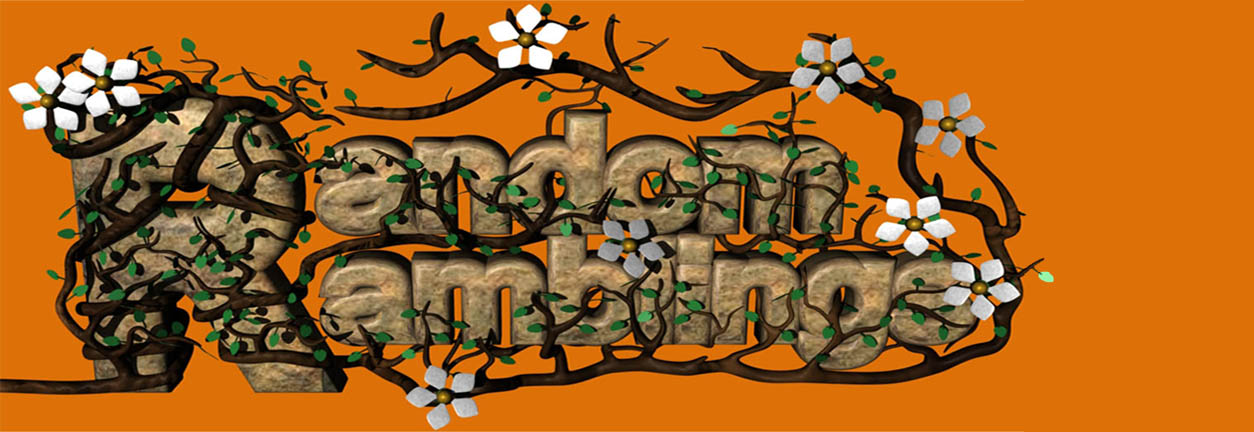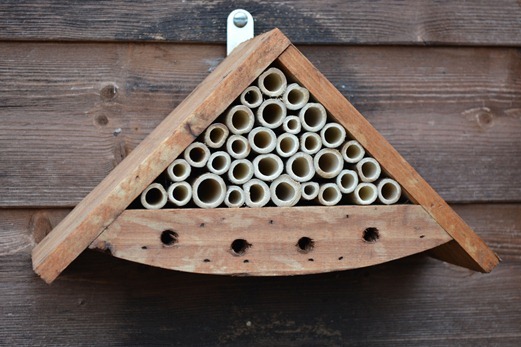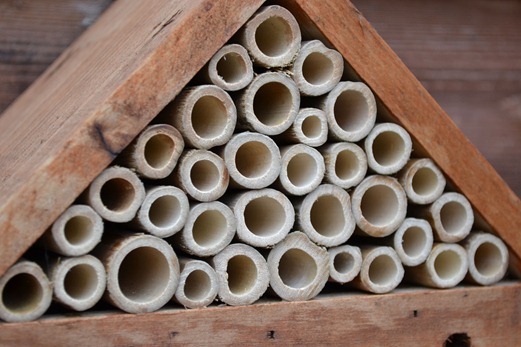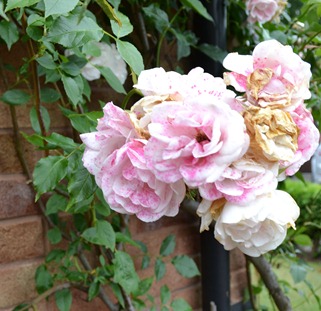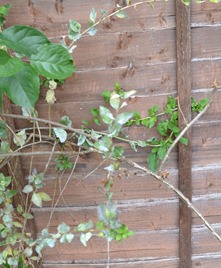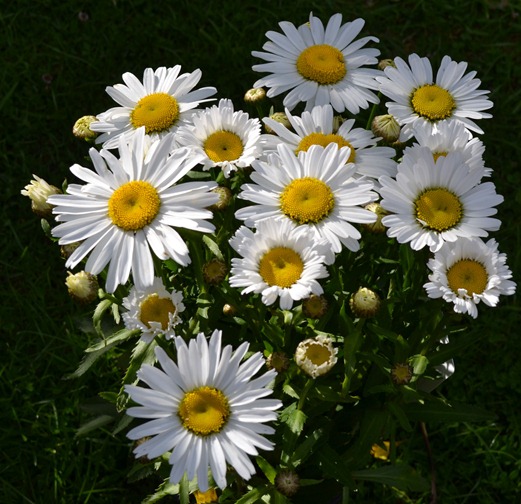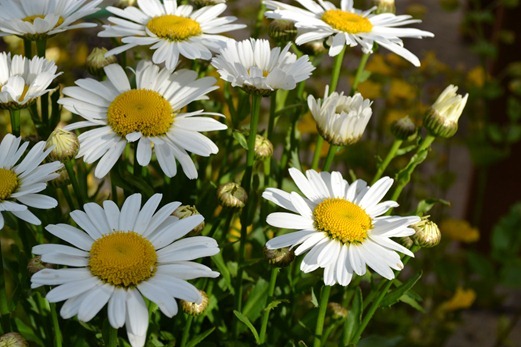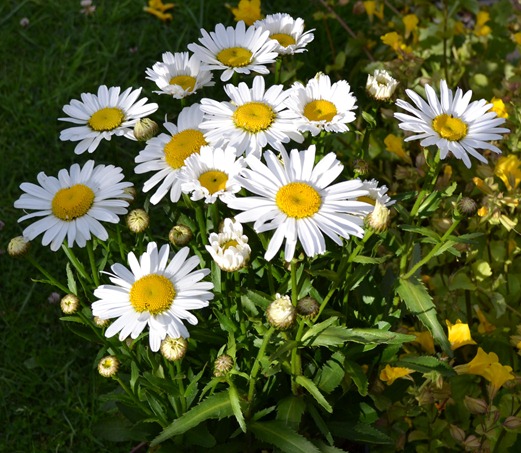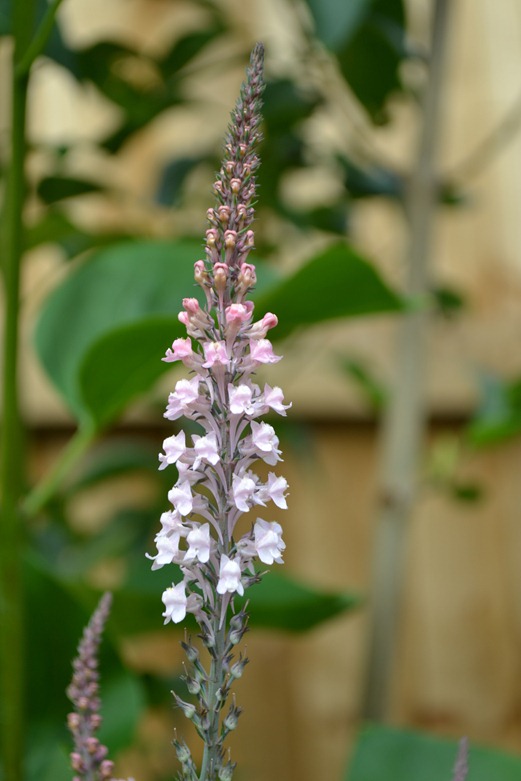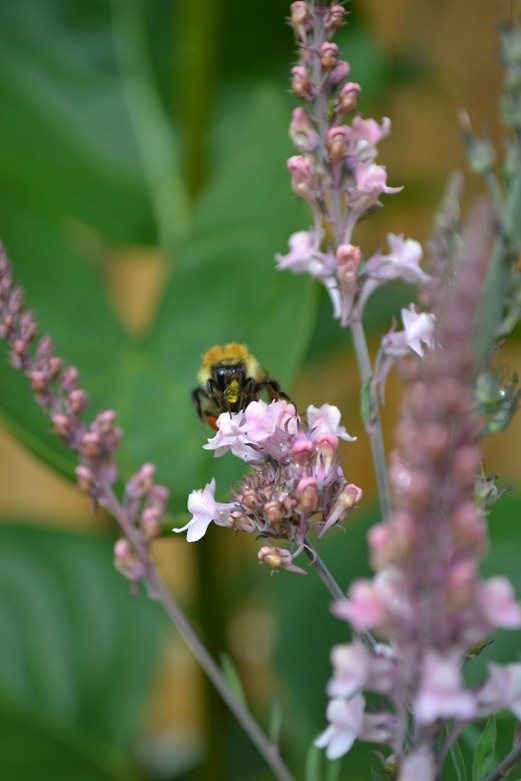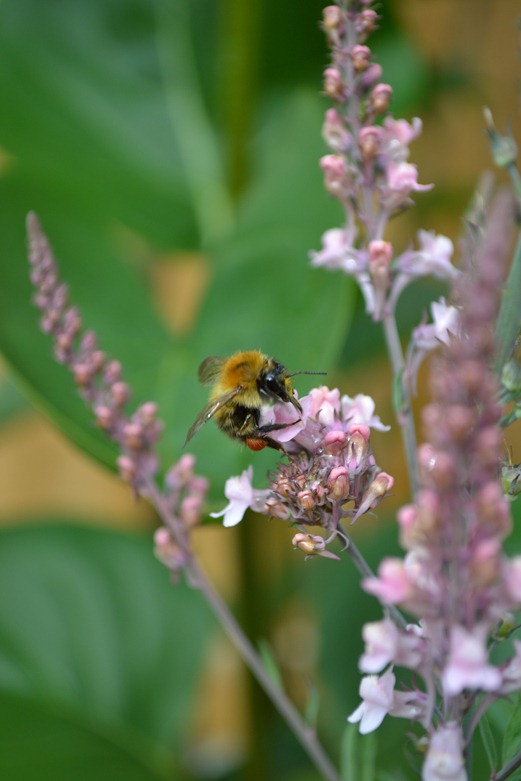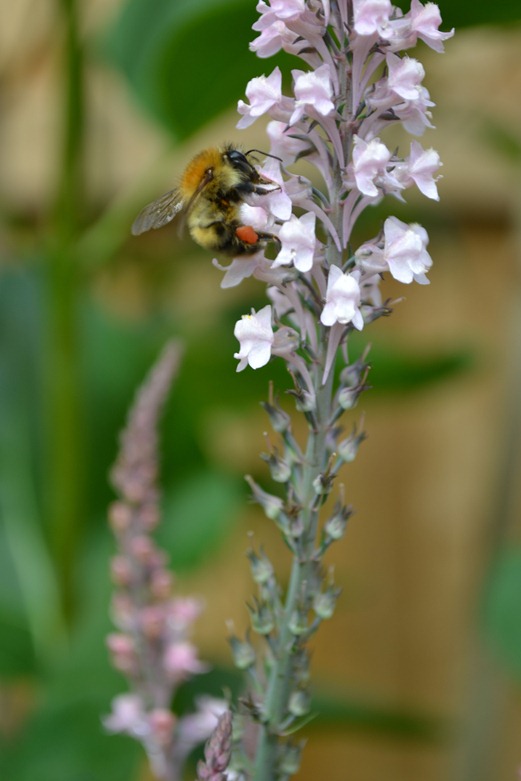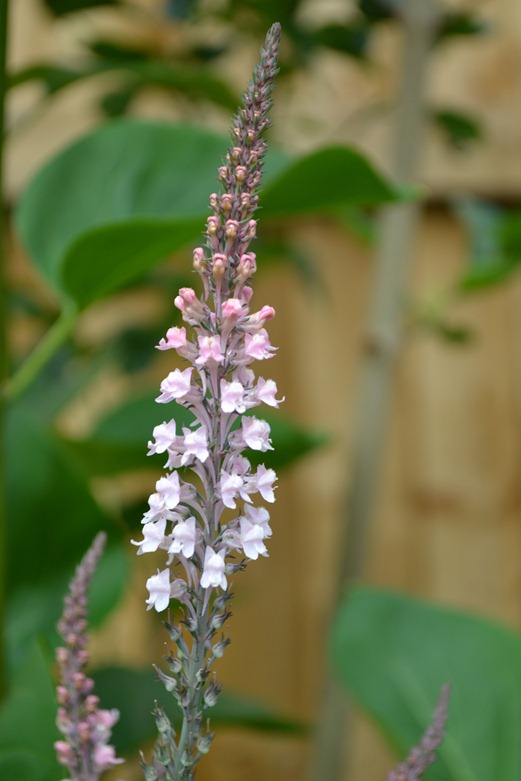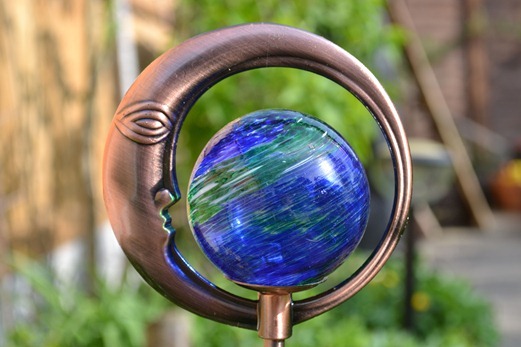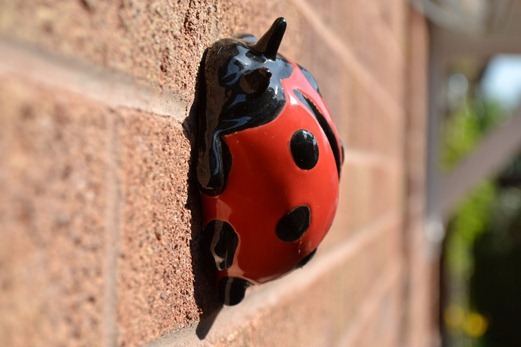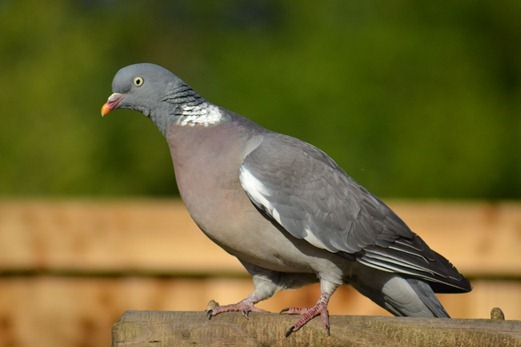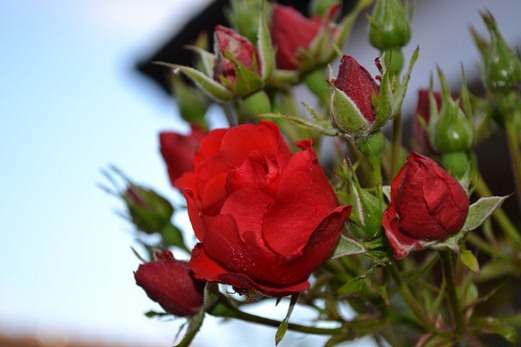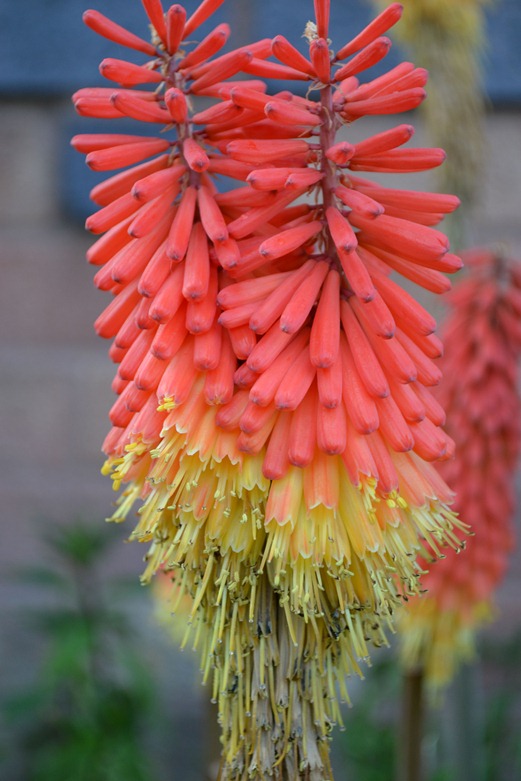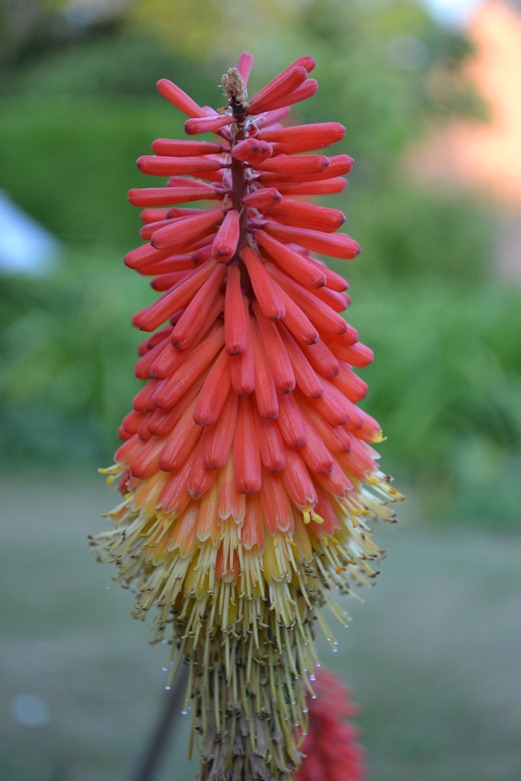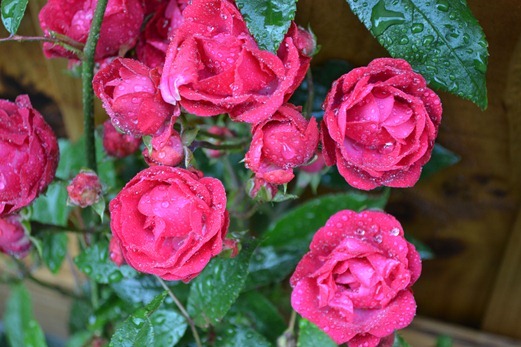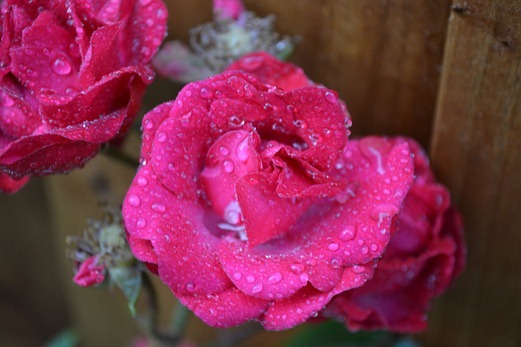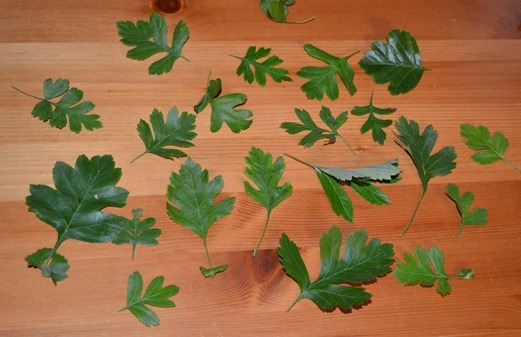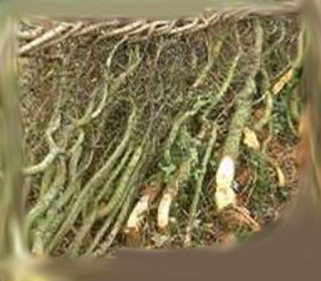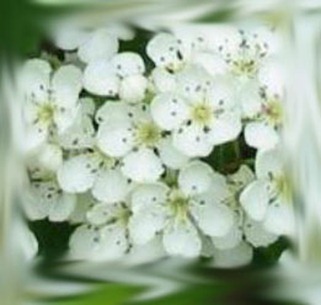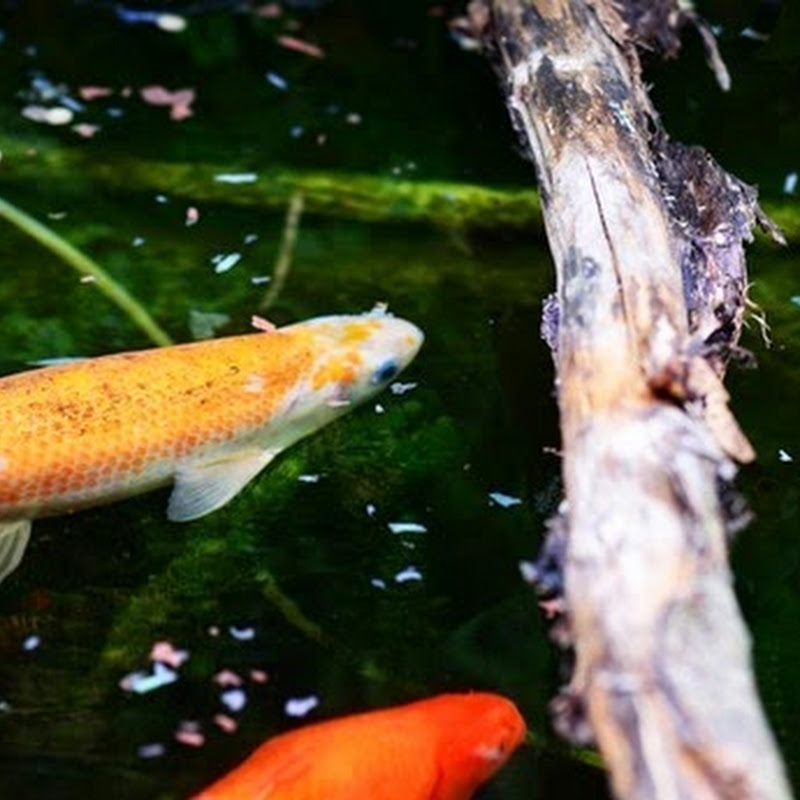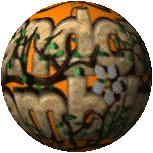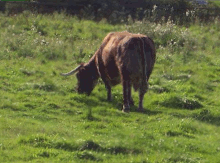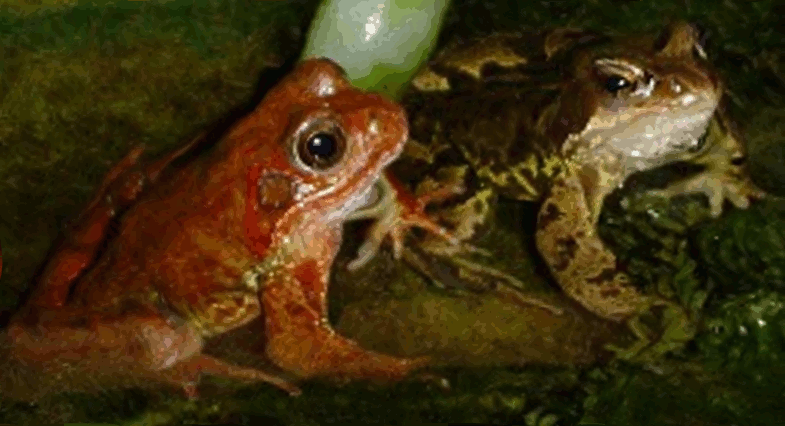The cat has turned thirteen. She is doing remarkably well. We obtained her as a four month old kitten from an animal rescue centre and had been advised that she was the runt of the litter of a very young female cat of under a year old, who was herself considered to be only a kitten. All of the other brothers and sisters of the litter had died with the exception of our little runt. She was the only black and white kitten at the rescue centre. She looked so very long and thin and we were told she would never be a large cat. Here we are all these years later with a very pretty queen, supporting long, lustrous whiskers. Her eyes are bright and there are times when we see the lion in her actions and personality. She guards our garden both front and back, the drive and the nearby houses, which are all her territory. How dare any other feline put their paws anywhere on what she considers to be her land? She slaps any cat who tries to encroach on her territory on the behind with a multi-pat of paws like an animal from a pride. Strangely, I have seen male cats twice her size cower and flee at speed – and yet she is not at all nasty. She is full of purrs and rubs and loving …
Random Ramblings
Pyramid selling
I have been looking for quite a long time to see if I could find an addition to the little garden home that has brought me so much pleasure and entertainment since it was attached onto my small shed. I thought about having a go at reproducing my own version but fate was kind to me and presented me with a very practical, durable and economical answer the other day – a pyramid insect dwelling.
Pyramid insect dwelling place
The Leaf-cutter bees have been back cleaning up the tubes of bamboo in the original insect house for a week or so. The protracted Winter weather had battered and bashed my original little insect house so much that after discussion we decided to take it down, do a quick repair and splash a little wood preserver on the top and sides. The bees were furiously buzzing around the holes and those that were away collecting leaf circles returned laden and very puzzled as to where their house had disappeared to. After a short while we placed the old insect house on the right-hand side nearest the fence and the new one was positioned where the old one had stood for the past four years.
The bees soon settled down carrying on with their mission but quite unexpectedly one of the larger bees and a couple of others broke away and began to take up residence in the new pyramid home. Now both insect houses are being filled …
The new and the old – home of the Leaf-cutter bees
24th, inexplicabilities
Midsummer slowly gambols its way into the month of June. It is like a wraith, a ghost, a magical creature that swirls itself into every nook and cranny. It presents itself in unexpected places and as much as people have tried, over the centuries, to explain it the only answer ever offered from the wisest and knowledgeable to the eccentric and slightly touched is ‘it is the faery folk.’
Much as we like to scoff and pretend that this is an ordinary time in an ordinary month we are always proved wrong.
This morning, I awoke to a pond that had suddenly plummeted in its water depth. Yesterday it was almost to the very brim with everything freshened and re-born in the recent rainfall. Now it reminds me of the sea shore when the tide goes out.
 Midsummer’s day water pond drop
Midsummer’s day water pond drop
My beautiful snow white floribunda Iceberg roses have suddenly changed into blood spotted nightmarish versions of the usual perfection.
Up above my Iceberg rose on Midsummer’s day with its pink and blood red spots and stripes
Iceberg rose … what it usually looks like
My Goji berry bushes have developed a Midsummer plume of mildew.
Midsummer Goji berry bush sprinkled with mildew
Of course, there are rational explanations as to why these things happen all around the same time in the middle of Summer, after all we all know that it isn’t the fairies, pixies and goblins … don’t we?
Lazy daisy
A large proportion of flowers in the world are part of the daisy family. From early childhood, the daisy brings us something that is difficult to define other than perhaps a familiar, friendly reassurance with its bright, gay, smiling countenance. The daisy, in one of its many forms, is essential as part of the garden family. It is, however, one of the most difficult plants to acquire – at least in the regular common ‘dog daisy’ form. Nurseries and Garden Centres are seemingly bereft of the bright yellow eye trimmed with a wheel of sparkling white eyelashes of the common form of garden daisy. This is the ‘old fashioned’ variety that everyone’s Great Great Grandmothers had dancing below their windows that neither frost or draught could ever kill off.
The origin of the name daisy, at least in the English language most likely arose from two early Anglo Saxon words ‘daes eage’ which translates into ‘day’s eye.’ People would notice how the daisy flowers would close up their petals tightly when twilight fell only to open them the following day just as dawn arose.
When a person gives a person either a daisy, a bunch of daisies or a daisy plant it holds special meanings … new beginnings, loyalty, purity, trust and dependability. This is probably the reason why years ago many brides chose daisies for a wedding posy as they instantly showed her intensions of becoming a good wife.
Cottage garden – Dog daisy
The Dog daisy … common Cottage garden daisy
My original daisy, which was a dwarf variety died off during the long very cold Winter that we had. After searching and searching I came across the above daisy which I am hoping is a traditional ‘Dog daisy,’ this week. I purchased two out of the remaining four plants which sat on the shop shelves and now I have my fingers well and truly crossed hoping that this is indeed the sturdy, hardy, traditional daisy that withstands everything that Nature can throw at it! Only time will tell but optimistically I am calling it ‘Dog daisy’ after the daisy that dwelt in my mother’s garden for well over forty years and for all I know is residing there still.
Strife
There is nothing quite like tall, elegant border plants to attract the bees. I have had Purple Loosestrife in my garden for years but this year one plant has changed into a beautiful champagne pink … it began to toast the bees as soon as the flowers opened. I have neither heard of nor seen this colour variation before and wonder whether it could be a new variety that nature has suddenly presented me with.
There are a few types of Loosestrife, those that belong to the Loosestrife family and those that belong to the Primrose family. Loosestrife, the purple variety is known as Lythrum salicaria. If mine, is in fact a new variety then I shall name it Lythrum pollykloggers. Lythrum means loostrife and of course pollykloggers would indicate the new variety.
I think it is very pretty …
Loosestrife – champagne pink … (possibly a new variety and if it is then I shall name it: Lythrum pollykloggers)
Lunar
Last night there was a lunar eclipse and in many areas of the world a deep red alien moon, peered down upon the Earth. Here in Worcestershire our sky was covered in cloud … our moon wasn’t even ‘tossed upon cloudy seas!’
It will be December before having the chance at such a moon gaze once again.
Potted ladybird
Ladybirds are probably the only beetle that children instantly fall in love with. Avidly pursued on flowers and leaves and gently placing tips of fingers up to the fronts of this lovely spotted beetle to have it race up hands and onto arms. Feeling the pitter-patter of tiny, tickling black feet which brings out squeals of joy just as it has done for generation after generation. So with such nostalgia how could I resist the temptation of a pottery ladybird?
Potted ladybird
Pigeon pie
There is something of the majestic about the Wood Pigeon. Its feathers are always smoothed down, well groomed with an elegant soft sheen to them. It holds its head high with discrete awareness and has the look of a ‘dowager duchess about to perch a pair of spectacles at the end of its beak’ about it. The eye is sharp, a bright gold, slightly green tinged ring around a jet black centre. It is the largest of the pigeon family and measures some 40 Centimetres in length. It’s song, which is a roo-ku-koo … roo-roo-ku-koo, whether distant or near is very haunting but at the same time reassuring like a persistent nursery rhyme that is lulling, especially on a hot Summer’s day.
Wood Pigeon – Columba palumbus
Weekend rains
Spring has been very, very dry. The heavy clay soil of Worcestershire formed tiny crumbs, almost sand-like in appearance in places whilst parts of the garden borders separated into deep fissures and cracks. The leaves of soft stemmed plants have been softly flopping in the middle of the day.
The weekend brought showers followed by steady rainfall and for the first time in my life I felt an inner joy as the rain washed over everything. It was a deep primitive feeling that swelled up from within – as sort of relief as the ground quenched its thirst. Never have I known such a dry Springtime!
I noticed a spider sheltering under a rose umbrella …
Red rose and the spider umbrella
Siamese poker
The fiery red hot spice flowers of the ‘Red Hot Poker’ plants are now in full bloom. Magnificent, magical, bright and exotic in appearance – they have always been one of my most favourite of garden plants. Spikey, green, pointed leaves that fall in every direction but are razor sharp to the touch like well-sharpened scythes they form a nest around the thick stems that hold the vibrant red and yellow flowers.
On one of my poker plants there is a magnificent Siamese topped flower. These dual versions happen every so often and help to create the illusion of yet more flowers on each plant.
Siamese Red Hot Poker Flowers
Red Hot Poker flower with bottom dew tips
To create more Red Hot Poker plants – simply ease up one of the small circle of leaves in either late Autumn or preferable early Spring. There should be a few small white roots showing … simply dig a medium size hole the size of a mug. If possible place a handful of sand and a little fresh compost in the hole before firming in the new poker plant. Water well in and leave. These are fairly resilient plants that take two to three years to reach maturity. Flowers usually appear on either the second or third year after planting.
Rosewater
Splashing a shower of water over some new plants that I purchased the other day, left me with a pleasant surprise on an old favourite, my rose cutting. This has now formed into a most beautiful floribunda bush.
Red rose floribunda produced from a cutting without any grafting
Rose cuttings
For those brave enough to try to grow their own roses from a rose plant cutting, never be put off by what the text books say which is usually along the following lines: ‘Roses require grafting onto wild root stock.’ Roses are one of the easiest plants to root, however it is wise to take up to ten cuttings of a favourite rose as it is not guaranteed that the rooted rose will produce offspring identical to the parent plant each time. There is a chance that some of the cuttings will become single petal flowering plants. Always find a fairly long stem and use either secateurs or sharp scissors to cut the stem below a new forming shoot (these are the small knobbles that appear along each stem usually half a finger length apart). Gently strip off the bottom leaves so that you have a clean bottomed stem. Dip the stem into a little water then into either hormone rooting powder or if none is available a little sand or fine grit. Make a hole with either a long wooden stick or dibber or fine ended trowel as deep as possible. Push the rose stem in as far as you can a good two to three inches (5 – 7.5 cm) in depth then firm the soil around using your hands or feet so that the cutting is cemented into the soil. This should be watered frequently for the first three months during which time new shoots and roots will form. In early spring, cut off the top leaves and give the young plant some dry fertiliser pellets or add fresh compost around where the roots are forming. My plant above is far more healthier than the parent plant has ever been. It is strong, sturdy and even in growth and produces blooms identical to the ‘mother’ plant. As it is a cutting and is not grafted onto wild root stock, it is free from ‘suckers.’
Da Vinci code
Leonardo Da Vinci was born illegitimately to a peasant woman called Caterina in a province of Florence, in Italy, called Vinci. His father, Piero Da Vinci, was trained in the law. Like a phoenix rising from the ashes of this humble background he developed into a genius in every quarter. Eager to learn, he built up a knowledge in maths, science, biology and art. His mind was electric and he allowed it to wander unfenced into every domain which gave him the freedom to become an inventor and an artist of the utmost perfection.
Leonardo Da Vinci’s portrait in red chalk of ‘The Bearded Man’ an unknown character that years ago was believed to be a self-portrait of Leonardo but has since been dismissed as not being a replica of the artist’s facial features.
The Da Vinci Code
Most of what Leonardo Da Vinci knew was self-taught … he was an inspiration to us all and his legacy lives on as though he has left part of his very core, part of his spirit, behind. Leonardo, if he were alive today, would most likely think that we waste so much of our time when we could be learning, creating, developing and achieving so much more as we all have had greater advantages than he ever had. So …
- ‘Try and learn at least one new thing every day and then pass on your knowledge to someone else – do not keep it to yourself; do not waste it; knowledge is information and information is power – it takes us to new horizons and makes the world a better place to live.’
Hawthorn–family Rosaceae
There are several varieties of Hawthorn in England, all of which will happily cross-pollinate and create a large amount of variations of the parent plants. Midland hawthorn (Crataegus laevigata) grows to no more than 10 metres in height, thus making it more sort after as a garden plant with its tidy and even growth in either a tree form or, if lopped, it will form a perfect bush. Its flowers also come in a wide variety of shades from deep cherry red through to blancmange pink and on to pink cream and white or white tinged with pink. These flowers also vary from single petal, double petal and tightly formed rosettes. This hawthorn therefore makes a perfect candidate for creating a bonsai. The next variety is slightly more untidy and is known as the Common hawthorn (Crataegus monogyna) and grows to a height of approximately 15 metres on either a single, sturdy, stem bole or from a crown of thick branches. There is an Oriental hawthorn (Crataegus laciniata) 10 metres tall with an encroaching habit spreading in all directions. The smallest of the family is an Azarole hawthorn (Crataegus azarolus), which at the most grows to an 8 metre tall plant that tends to have twisting branches with a habit of spreading and lastly, a Various-leaved hawthorn (Crataegus heterophylla), which is usually around 10 metres in height. When all of these varieties are found in close proximity to each other, all kinds of variations occur. The haws or hips are gathered by birds and especially loved by doves and pigeons and so the seeds are dropped and scattered over a very wide area and readily germinate.
These are a few hawthorn leaves gathered locally ranging from Common, Midland, Azarole and various hybrid species
Hawthorn comes under the name Crataugus all having thorns and all bearing similarities. This particular grouping of small trees and shrubs all will form good stock-proof hedging which can be shaped by cutting out all of the dead wood during the Winter months. The hedge layer will then usually hammer Hazel sourced from a coppice at intervals to steak out the hedge. Once this has been done a cut is made at the base of the trunk of each stem just enough to allow the rest of the stem or branch to bend. The idea being that the whole branch will thrive and produce more leaves and branches making the hedge more dense. The bottoms of the trunks or stems are known as pleachers these are folded so that they are supported by the Hazel stakes. The top parts of each pleacher may then be pulled through to one side or crossed either side this is then held in place in neat rolls with strips of wood, which are sometimes known as hethers. This is a wide-spread method of safely keeping boisterous and robust animals from breaking through from fields into open country lanes especially in England.
Semi-cut and plaited hedge laid down during the cold Winter months before the sap has begun to rise
Hawthorn or May blossom
Old Hawthorn saying: ‘Don’t cast a clout until May is out’
Meaning: Never cast off your Winter clothing until the Hawthorn blossom is open on the boughs.
